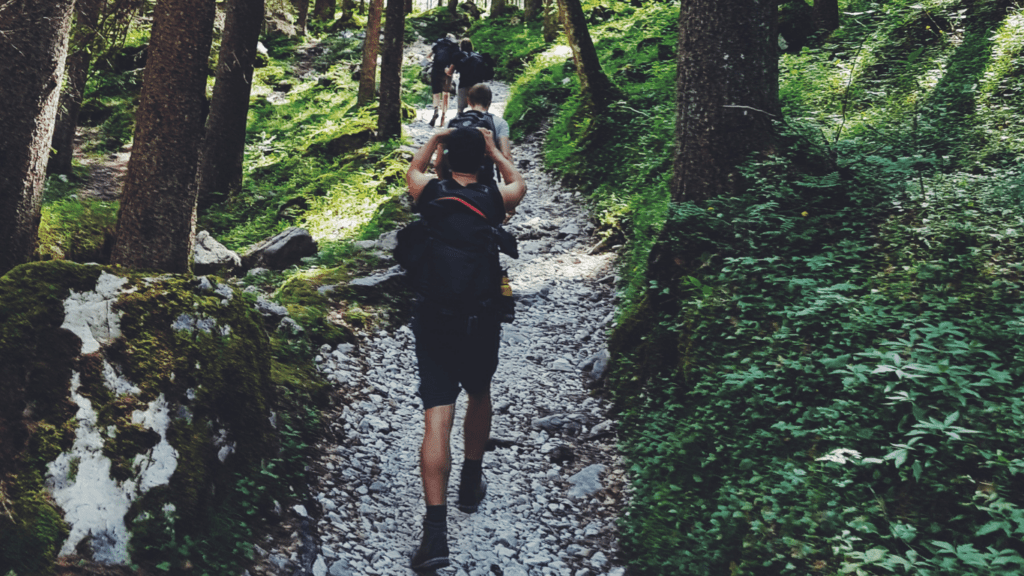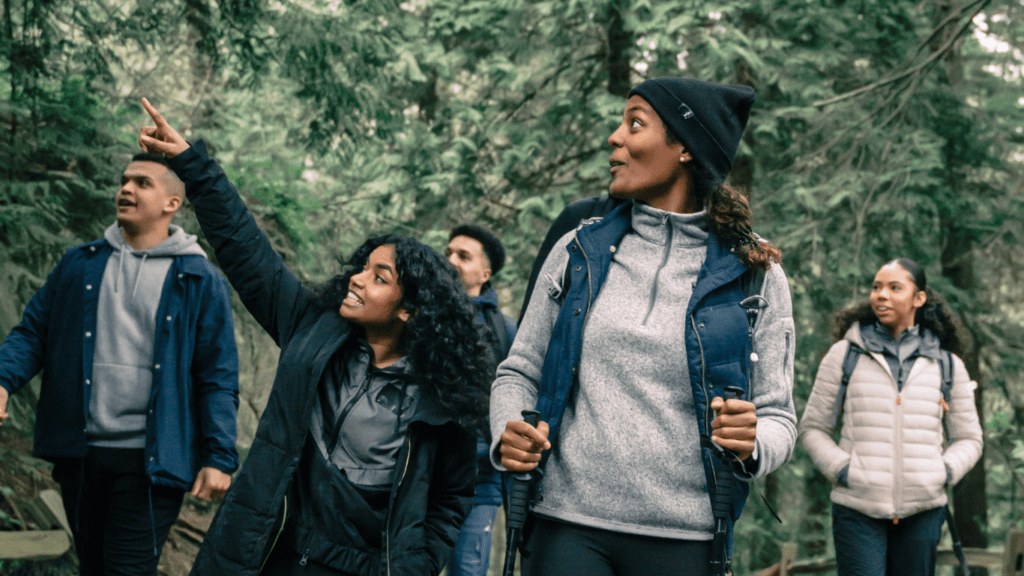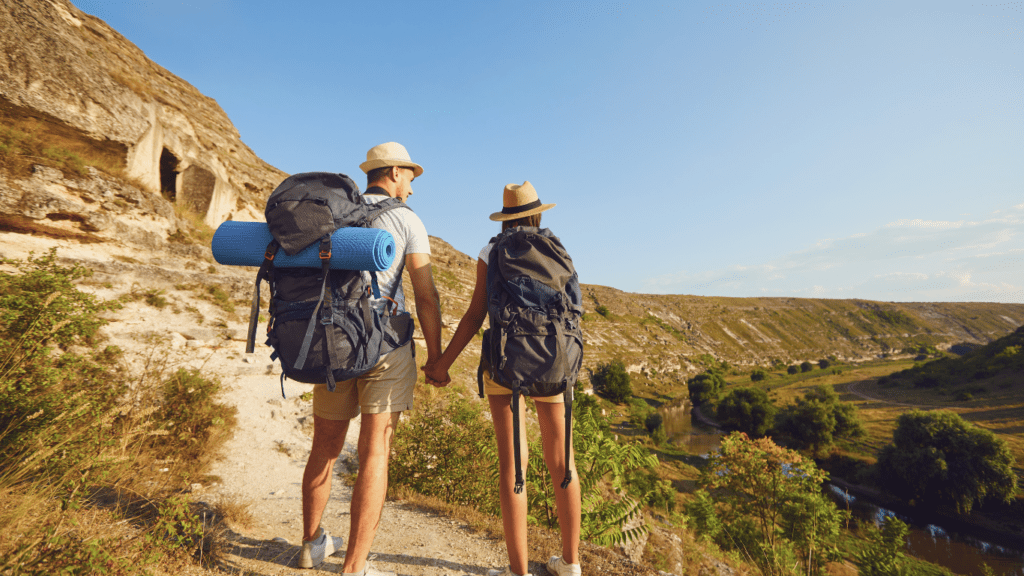Overview Of Scenic Hiking Trails
Scenic hiking trails offer a unique combination of physical challenge and natural beauty, making them top destinations for outdoor enthusiasts. These trails showcase diverse landscapes, including lush forests, towering mountains, and serene lakes, all providing stunning vistas that captivate hikers. Each trail carries distinct features, bringing something special to complement the experience.
Exploring these trails, you’ll encounter varied terrains ranging from easy walks through meadows to strenuous climbs on rocky paths. Famous trails like the Pacific Crest Trail feature vast stretches of wilderness spanning diverse regions. Others, such as the Appalachian Trail, run along scenic ridges and valleys, offering breathtaking views and a sense of accomplishment.
Wildlife sightings add another layer of excitement to these hikes. On trails like the John Muir Trail, hikers often spot deer, bears, and various bird species amidst the picturesque Sierra Nevada mountains. Other trails, like the Zion Narrows in Utah, present unique geological formations and native flora, making the hike both challenging and visually rewarding.
Seasons play a critical role in the hiking experience. Some trails, like the Laugavegur Trail in Iceland, reveal their true splendor in summer with vibrant landscapes and moderate temperatures. Others, such as the Mount Kilimanjaro hike, offer a different allure in winter, requiring proper gear and preparation for snowy conditions and extreme altitude changes.
Preparing for these scenic hikes involves understanding the difficulty level, trail length, and weather conditions. Resources like local hiking guides and online forums provide valuable information for planning safe and enjoyable hikes. By considering these factors, you can make the most of the adventure and fully appreciate the natural splendor these trails offer.
Criteria For Selection
To feature the top hiking trails, I’ve considered several crucial criteria. Each trail showcases exceptional aspects that cater to diverse preferences and abilities.
Natural Beauty
Every trail on the list boasts stunning natural beauty, offering picturesque views that captivate hikers. For example, the Haiku Stairs in Hawaii provides panoramic ocean views, while the Tour du Mont Blanc offers alpine scenery. Each of these landscapes represents unique geological and ecological features, ensuring that hikers experience the awe of untouched nature. For those seeking waterfalls, trails like the Kalalau Trail in Hawaii deliver breathtaking cascades.
Accessibility
Accessibility is essential in determining a trail’s inclusion. Factors like trailhead location, transportation options, and entry requirements were evaluated. Urban-adjacent trails, such as Runyon Canyon in Los Angeles, provide ease of access from nearby cities, appealing to those with limited travel time. In contrast, remote trails like the Torres del Paine Circuit in Patagonia require more planning but reward with seclusion and pristine environments. Public transport availability and clear signage were also considered to enhance accessibility.
Trail Difficulty
Trail difficulty varies, catering to hikers of different skill levels. Easy trails, such as the Bright Angel Trail in the Grand Canyon, accommodate beginners and families, offering gentle inclines and shorter distances. Moderate trails like the Inca Trail in Peru challenge intermediate hikers with a mix of elevation changes and uneven terrain. Lastly, trails classified as difficult, such as the Everest Base Camp Trek, demand advanced skills and preparation, featuring high altitudes and challenging weather conditions. Descriptions often include distance, elevation gain, and notable obstacles to set appropriate expectations.
Top 10 Scenic Hiking Trails
Exploring scenic hiking trails blends adventure with the beauty of nature. Here’s a curated list of ten trails that promise stunning landscapes and memorable experiences.
Trail 1: Appalachian Trail, USA
The Appalachian Trail stretches over 2,190 miles across 14 states in the Eastern US. It offers varied landscapes, from the lush forests of Virginia to the rugged mountains of New Hampshire. Hikers can encounter diverse wildlife and scenic vistas, making it a must-explore.
Trail 2: Inca Trail, Peru
Located in the Andes Mountains, the Inca Trail spans around 26 miles and leads to the ancient city of Machu Picchu. This trail combines stunning natural beauty with historical significance, traversing cloud forests, alpine tundra, and Incan ruins.
Trail 3: Torres del Paine Circuit, Chile
Found within Torres del Paine National Park, this 80-mile circuit offers breathtaking views of mountains, glaciers, and lakes. Known for its remote location in Patagonia, the trail presents a challenging yet rewarding hiking experience.
Trail 4: Tour du Mont Blanc, Europe
Encircling the Mont Blanc massif, this 110-mile trail passes through France, Italy, and Switzerland. The Tour du Mont Blanc showcases diverse alpine scenery, including snow-capped peaks, verdant valleys, and picturesque villages, suitable for seasoned hikers.
Trail 5: Everest Base Camp Trek, Nepal
Spanning approximately 80 miles round trip, the Everest Base Camp Trek navigates the Himalayas, offering awe-inspiring views of the world’s highest peaks. This trail provides insight into the Sherpa culture and awe-inspiring landscapes.
Trail 6: Zion Narrows, USA
Located in Zion National Park, Utah, the Zion Narrows follows the Virgin River through a dramatic slot canyon. Spanning 16 miles, it provides a unique hiking experience with towering canyon walls and river crossings.
Trail 7: Milford Track, New Zealand
New Zealand’s Milford Track stretches 33 miles through Fiordland National Park. Known for its pristine beauty, the trail winds past rivers, waterfalls, and mountain peaks, offering an immersive experience in untouched nature.
Trail 8: Laugavegur Trail, Iceland
This 34-mile trail connects the Landmannalaugar and Thórsmörk reserves. The Laugavegur Trail traverses geothermal areas, lava fields, and vibrant rhyolite mountains, showcasing Iceland’s otherworldly landscapes.
Trail 9: Haiku Stairs, Hawaii
Also known as the “Stairway to Heaven,” this trail in Oahu, Hawaii, consists of nearly 4,000 steps. Though currently closed to the public, it offers unparalleled views of the Pacific Ocean and lush Hawaiian terrain. Note: Check local regulations before planning.
Trail 10: John Muir Trail, USA
Spanning 211 miles from Yosemite Valley to Mount Whitney, the John Muir Trail crosses California’s Sierra Nevada. It offers breathtaking views of alpine meadows, crystal-clear streams, and high mountain peaks, ideal for long-distance hikers.
Tips For A Safe And Enjoyable Hike

To fully enjoy scenic hiking trails, planning is essential. These tips aim to ensure safety and maximize enjoyment during your hikes.
Preparation
Researching the trail is vital. I always assess the trail’s difficulty, length, and weather conditions. Local hiking guides and online resources offer valuable insights. Adequate planning includes knowing the terrain and any potential hazards. I also inform someone about my hiking plans and expected return time.
Essential Gear
Proper gear enhances the hiking experience. I recommend sturdy hiking boots, weather-appropriate clothing, and a reliable backpack. Essentials include:
- Navigation tools: Maps, compass, or GPS device
- Hydration: Sufficient water or a portable water filter
- Nutrition: High-energy snacks or meals
- First aid kit: Bandages, antiseptics, and any personal medications
- Multi-tool or knife: Useful for various tasks
- Emergency shelter: Lightweight tent or space blanket
Safety Measures
Safety on the trail is paramount. I suggest beginning hikes early in the day to allow ample daylight. Always stay on marked paths to avoid getting lost. Be mindful of wildlife; observing from a distance ensures both your safety and that of the animals. Carry a whistle and flashlight for emergencies. If the weather changes, it’s wise to turn back to avoid risk.
How To Make The Most Of Your Hiking Experience
Plan Ahead
Thorough planning is key to a successful hike. Research the specifics of each trail, including difficulty, length, and weather conditions. Refer to reliable sources like local hiking guides and official websites. Inform someone about your hiking plans. This planning ensures that you prepare adequately and stay safe.
Pack Essential Gear
The right gear can make or break your hiking experience.
- Footwear: Invest in sturdy, comfortable hiking boots.
- Navigation: Carry a map, compass, or GPS device.
- Hydration: Bring enough water or have a filtration method.
- Food: Pack high-energy snacks (e.g., nuts, energy bars).
- First Aid Kit: Include basic medical supplies (e.g., bandages, antiseptic).
- Emergency Shelter: Have a lightweight tarp or emergency blanket.
Start Early
Early starts maximize daylight hours and offer cooler temperatures. Morning hikes also improve chances of wildlife sightings. Starting early reduces the risk of adverse weather conditions becoming a problem as the day progresses.
Stay on Marked Trails
Following marked trails ensures safety and preserves natural habitats. Straying off marked paths increases the risk of getting lost or damaging delicate ecosystems. Many trail systems use color-coded blazes to guide hikers.
Pace Yourself
Understanding personal limits prevents overexertion. Take breaks to rest and hydrate. Use these moments to enjoy the scenery and take photographs. Gradual pacing helps maintain energy and endurance across long distances.
Be Weather Aware
Weather conditions can change rapidly, especially in mountainous regions. Always check weather updates before and during your hike. Carry appropriate clothing layers to handle unexpected temperature changes. If weather conditions worsen, turn back to ensure safety.
Respect Wildlife
Encountering wildlife adds to the hiking experience. Maintain a safe distance and never approach animals. Avoid feeding wildlife; it disrupts their natural habits and can lead to dangerous encounters. Use a zoom lens for photographs.
Leave No Trace
Practice Leave No Trace principles to protect natural spaces. Pack out all trash, including food wrappers and biodegradable items. Avoid picking plants or disturbing wildlife. Use designated restroom facilities or follow proper waste disposal methods.
Capture Memories
Document the hiking experience with photographs and journal entries. Modern smartphones make capturing high-quality images easy and convenient. Journaling adds a personal touch, allowing detailed recollections of each adventure.
Adhering to these tips elevates the hiking experience, ensuring both enjoyment and safety.



 Lead Forest Survival Specialist & Outdoor Educator
Timothy Peters is Whisper Forest Ways’ resident expert on wilderness survival and all things related to thriving in the outdoors. With a background in environmental sciences and over a decade of hands-on survival training, Timothy combines scientific knowledge with practical experience to teach readers essential survival skills, such as shelter building, fire making, and foraging. His approach emphasizes respect for the natural world and sustainability, ensuring that all of his methods encourage low-impact interaction with the environment. Whether you’re new to outdoor adventures or a seasoned explorer, Timothy’s detailed guides and insights provide invaluable knowledge for safely and confidently navigating the wild.
Lead Forest Survival Specialist & Outdoor Educator
Timothy Peters is Whisper Forest Ways’ resident expert on wilderness survival and all things related to thriving in the outdoors. With a background in environmental sciences and over a decade of hands-on survival training, Timothy combines scientific knowledge with practical experience to teach readers essential survival skills, such as shelter building, fire making, and foraging. His approach emphasizes respect for the natural world and sustainability, ensuring that all of his methods encourage low-impact interaction with the environment. Whether you’re new to outdoor adventures or a seasoned explorer, Timothy’s detailed guides and insights provide invaluable knowledge for safely and confidently navigating the wild.
